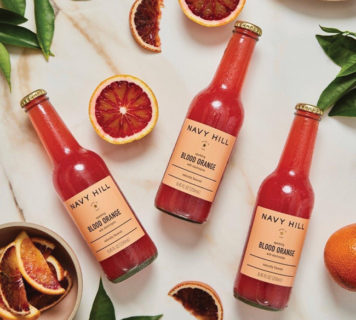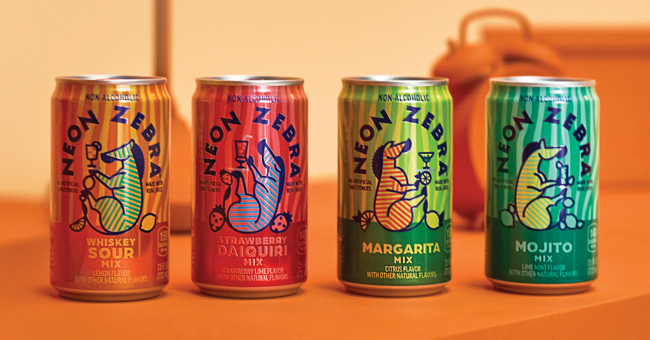The Recipe For Mixers: Trying to Stay on Course in a Sea of NA Options
In a press release introducing her new mixer brand Betty Buzz in September, actress Blake Lively neatly summed up the feeling amongst many curious consumers eager to explore the emerging world of zero-proof beverages: “Over the past many years of mixing but not drinking cocktails, it became clear mixers are the unsung heroes of the drink world and deserve just as much love as alcohol.”
In general, that sounds like great news for brands and entrepreneurs in the mixers category: as has been well reported by now, Americans are increasingly thirsty for innovative and interesting no-and-low alcohol beverages, whether as part of a commitment to a completely booze-free lifestyle or just as a way to mix up their familiar drinking habits. According to a January report by market research firm Brightfield Group, 57% of wellness consumers claim to be drinking less alcohol than in the past; amongst that group, 47% wish there were more non-alcoholic options available on the market. Brands have been happy to provide that innovation, which has been manifested in everything from alcohol-free spirits to RTD bitters and soda.
But with their own place in the beverage spectrum already well defined, where do mixers fit on this new stage? With value to provide across either side of the alcohol divide means, there’s ample opportunity for further growth, but also added pressure to keep up with ingredient and flavor trends as the traditional borders between categories continue to fall.
With more brands and options available than ever before, Lively’s words feel particularly prescient: if a mixer doesn’t require alcohol, then what exactly makes it a mixer, instead of a non-alcoholic RTD cocktail? And how do they fit amongst the new names built around complex and sophisticated non-alcoholic mocktails — think brands like Lyre’s Spirit Co. and Casamara Club, or function-forward products like Kin Euphorics — even as established players are repositioning existing products as zero-proof options. It’s all an attempt to harness the trendline, of course: according to research from IWSR, zero-alcohol RTDs and spirits are both expected to grow volume around 14% CAGR through 2025.
Brands have responded to the incursions by non-alcoholic drinks in various ways, including by simply continuing to push the envelope with interesting and on-trend new flavor innovations. This fall, Minnesota-based Mixly introduced three new SKUs (Pear Honey Vanilla Lime, Strawberry Pomegranate, and Rosemary Lemon Honey), while Milwaukee’s Top Note Tonic earned praise for the inaugural release in its Bartender Release series, Gentiana, marketed as “the first aperitivo soda in the United States featuring French gentian root in 145 years.”
Along with creative flavors, mixer brands are also increasingly looking to align their products with on-trend health and wellness callouts. Navy Hill markets its line of “sonics” (a blend of club soda and tonic) as “the first cocktail mixer with electrolytes for hydration,” while the likes of Zevia and Swoon have extended their respective zero-sugar/zero-calorie credentials to mixer products. The nascent RTD bitters and soda category is also a space where mixer and alcohol-adjacent brands may find more runway for growth. That approach has fueled expansion for the likes of Hella Cocktail Co. and Portland, Oregon-based The Bitter Housewife, which launched two new flavors, Grapefruit and Cardamom, in its canned Bitters & Soda line over the past year.
And while brands like Q Mixers and Fever Tree (+42% in U.S. revenue through July 2021, with “very strong” off-premise sales) have continued to leverage their followings within bars and restaurants to expand in retail, they have also dropped their prices, potentially giving space for a new mainstream challenger brand to emerge. One such name is Owen’s Craft Mixers, which has generated momentum off the strength of a star-studded $7.5 million fundraising round in May (Darius Rucker, Mario Lemieux, Lee Brice) and its ongoing partnership with media powerhouse Barstool Sports. After successfully seeding the brand in on-premise channels — specifically golf courses and over 60 professional sports venues — the company has been able to leverage its growing awareness to offset COVID-related declines in those accounts by pushing further into grocery and drug stores, including at Kroger, CVS, Shaw’s and Food Lion. There’s also a new entrant in the form of Taffer’s Mixologist, a seven-SKU line of mixers from bar expert and TV host Jon Taffer.
But more prominently, while chief rival Coca-Cola has been dabbling in beverage alcohol with Molson Coors and Constellation Brands, Pepsi has taken a number of steps over the past 12 months to develop a long-term strategy around the mixer category. At the beginning of 2021, the soda giant soft launched its first-ever mixer line, Neon Zebra, in four broadly accessible SKUs: Margarita, Strawberry Daiquiri, Mojito and Whiskey Sour. Born out of internal company research on consumers between the ages of 21-34, the brand has been supported by a summer ad campaign fronted by comedian and actor Billy Eichner.
A second, premium line of mixers in 7 oz. glass bottles, called Unmuddled, followed in September, entering natural grocery chain Fresh Thyme (and Amazon) in single-flavor 4-packs priced at $6.19 each. Available in Fiery Pineapple, Spiced Mandarin and Lemon Mint, Unmuddled offers a different flavor experience and nutritional profile than Neon Zebra: 70 calories and 18 grams of sugar per serving, compared to 150 calories and 36 grams of sugar. Both feature juice and natural flavors. Whether they’re mixers, mocktails, or straight up sodas are in the eye of the drinker, but it’s clear that Pepsi thinks there’s enough love to go around, as well.


Receive your free magazine!
Join thousands of other food and beverage professionals who utilize BevNET Magazine to stay up-to-date on current trends and news within the food and beverage world.
Receive your free copy of the magazine 6x per year in digital or print and utilize insights on consumer behavior, brand growth, category volume, and trend forecasting.
Subscribe

